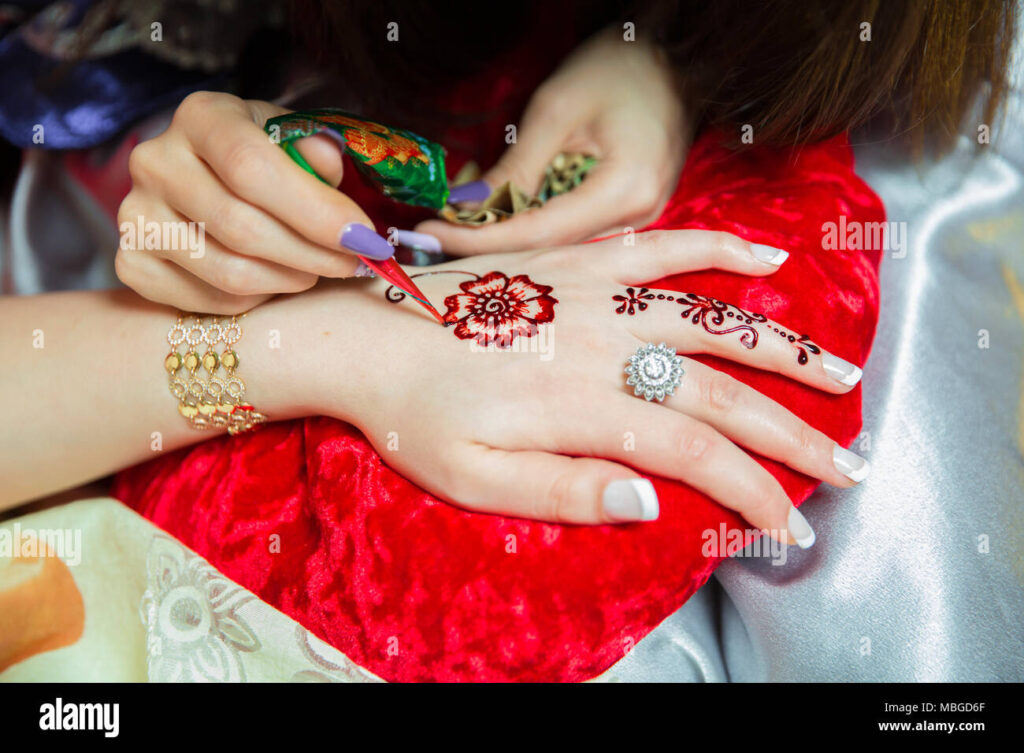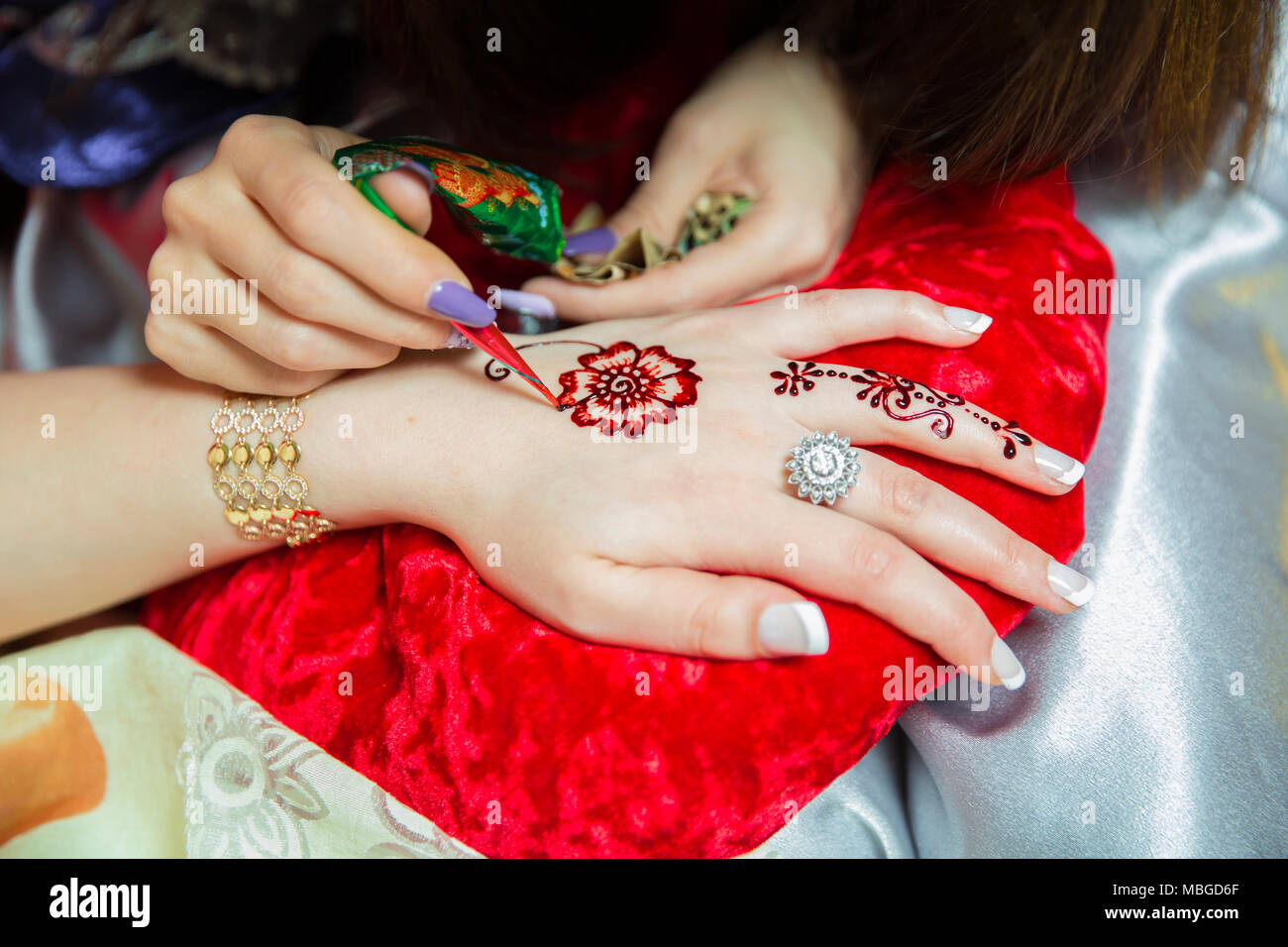
Henna Tattoo Maintenance: A Comprehensive Guide to Prolonging Your Art
Henna tattoos, also known as mehndi, are a beautiful and temporary form of body art that has been practiced for centuries across various cultures. Made from the powdered leaves of the henna plant, the paste is applied to the skin, leaving behind a stain that can last anywhere from one to three weeks, depending on several factors. One of the most crucial factors determining the longevity and vibrancy of your henna tattoo is proper henna tattoo maintenance. This guide offers comprehensive strategies to help you maximize the lifespan and beauty of your henna design.
Understanding Henna and Its Staining Process
Before diving into the specifics of henna tattoo maintenance, it’s essential to understand how henna stains the skin. The henna paste contains lawsone, a dye molecule that binds to the keratin in the outer layers of your skin. The longer the paste stays in contact with the skin, the more lawsone is absorbed, resulting in a darker and longer-lasting stain. Several factors influence the intensity and duration of the stain, including the quality of the henna, the preparation of the paste, and, most importantly, how well you maintain the tattoo after application.
Immediate Aftercare: The First Few Hours Are Critical
The first few hours after henna application are crucial for setting the stage for a long-lasting tattoo. Here’s what you should do:
- Keep the Paste on for as Long as Possible: The longer the henna paste remains in contact with your skin, the darker and longer-lasting the stain will be. Aim for at least 2-6 hours, but preferably longer. Some people leave it on overnight.
- Seal the Henna: Once the henna paste is dry (usually after 15-30 minutes), seal it to prevent it from flaking off prematurely. A common method is to use a mixture of lemon juice and sugar. Apply this mixture sparingly with a cotton ball, creating a sticky layer that helps the paste adhere to your skin. Avoid over-saturating the paste, as this can dilute the dye.
- Avoid Water Contact: Water can hinder the staining process. Protect your hennaed area from water for as long as possible. If you need to wash your hands, try to avoid getting the hennaed area wet.
The Art of Removing Henna Paste
Once you’ve allowed the henna paste to stay on for the desired amount of time, the next step is removing it. However, how you remove the paste is just as important as how long you kept it on. Avoid washing the paste off with water. Instead:
- Scrape Off the Paste: Gently scrape off the dried henna paste using a blunt object, such as the edge of a credit card or a spoon. This prevents unnecessary water contact.
- Apply Natural Oil: After scraping off the paste, apply a natural oil, such as coconut oil, olive oil, or sesame oil. Oil helps to oxidize the henna stain, making it darker and more vibrant.
Daily Henna Tattoo Maintenance: Prolonging the Stain
After the initial aftercare, consistent daily henna tattoo maintenance is essential. Here’s how to keep your henna tattoo looking its best:
Moisturize Regularly
Keeping your skin moisturized is paramount. Dry skin causes the henna stain to fade faster. Apply natural oils or a high-quality, fragrance-free moisturizer several times a day. Oils like coconut, olive, and sesame not only moisturize but also help to deepen the color of the stain. [See also: Natural Skin Moisturizers]
Avoid Excessive Washing
Frequent washing can expedite the fading process. Minimize washing the hennaed area, and when you do, use mild, sulfate-free soap. Pat the area dry gently instead of rubbing it vigorously. Consider applying a thin layer of petroleum jelly or beeswax balm before showering to create a waterproof barrier.
Steer Clear of Harsh Chemicals
Avoid using harsh chemicals, such as chlorine, detergents, and exfoliating scrubs, on the hennaed area. These substances can strip away the outer layers of skin, causing the stain to fade quickly. When swimming in chlorinated pools, apply a waterproof barrier cream or petroleum jelly to protect your henna tattoo.
Limit Exposure to Heat and Friction
Excessive heat and friction can accelerate the fading process. Avoid activities that cause excessive sweating in the hennaed area, and wear loose-fitting clothing to minimize friction. Be mindful of accessories like jewelry or watches that might rub against the tattoo.
Sun Protection
While a little sun exposure can help oxidize the henna stain and make it darker, prolonged exposure can also cause it to fade. Apply sunscreen to the hennaed area if you plan to spend extended periods in the sun. [See also: Best Sunscreens for Tattoos]
Foods and Activities That Can Affect Your Henna Tattoo
Certain foods and activities can indirectly affect the longevity of your henna tattoo. Here are some factors to consider:
- Exfoliating Foods and Supplements: Avoid consuming excessive amounts of foods or supplements that promote skin exfoliation, such as those high in vitamin A or retinoids.
- Household Chores: Wear gloves when doing dishes or cleaning to protect your henna tattoo from harsh chemicals and prolonged water exposure.
- Swimming: As mentioned earlier, chlorine in swimming pools can fade the stain. Protect your henna with a barrier cream or avoid prolonged swimming sessions.
Troubleshooting Common Henna Tattoo Problems
Even with the best henna tattoo maintenance, you might encounter some common issues. Here’s how to address them:
Fading Too Quickly
If your henna tattoo is fading faster than expected, reassess your aftercare routine. Ensure you’re moisturizing regularly, avoiding harsh chemicals, and limiting water exposure. Consider using a henna sealant product to help prolong the stain.
Uneven Staining
Uneven staining can occur if the henna paste wasn’t applied evenly or if certain areas of your skin are drier than others. Unfortunately, there’s not much you can do to fix uneven staining after the fact. However, you can prevent it by ensuring the henna paste is applied uniformly and by exfoliating your skin gently before application.
Allergic Reactions
While rare, allergic reactions to natural henna can occur. Symptoms include itching, redness, and blistering. If you experience these symptoms, remove the henna paste immediately and consult a healthcare professional. It’s crucial to ensure that the henna used is pure and natural, as some commercial henna products contain chemical additives that can cause allergic reactions. Always do a patch test before applying henna extensively. [See also: Identifying Henna Allergies]
Choosing the Right Henna
The quality of the henna paste significantly impacts the resulting stain. Opt for natural henna, which is typically a brown or reddish-brown color. Avoid black henna, as it often contains a chemical dye called paraphenylenediamine (PPD), which can cause severe skin reactions and permanent scarring. Purchase your henna from reputable sources to ensure its purity and safety.
Henna Tattoo Maintenance: A Recap
Effective henna tattoo maintenance involves a combination of immediate aftercare and consistent daily practices. By keeping the paste on for as long as possible, protecting the area from water and harsh chemicals, moisturizing regularly, and choosing high-quality henna, you can significantly prolong the lifespan and vibrancy of your henna tattoo. Remember, patience and diligence are key to enjoying your beautiful henna art for as long as possible.
In summary, mastering henna tattoo maintenance is about understanding the staining process, taking immediate action after application, and adhering to a daily care routine. With the right approach, you can ensure your henna tattoo remains a stunning work of art for weeks to come. Taking these simple steps will significantly enhance the beauty and longevity of your temporary tattoo. Embrace the art, understand the science, and enjoy the vibrant expression of henna.

